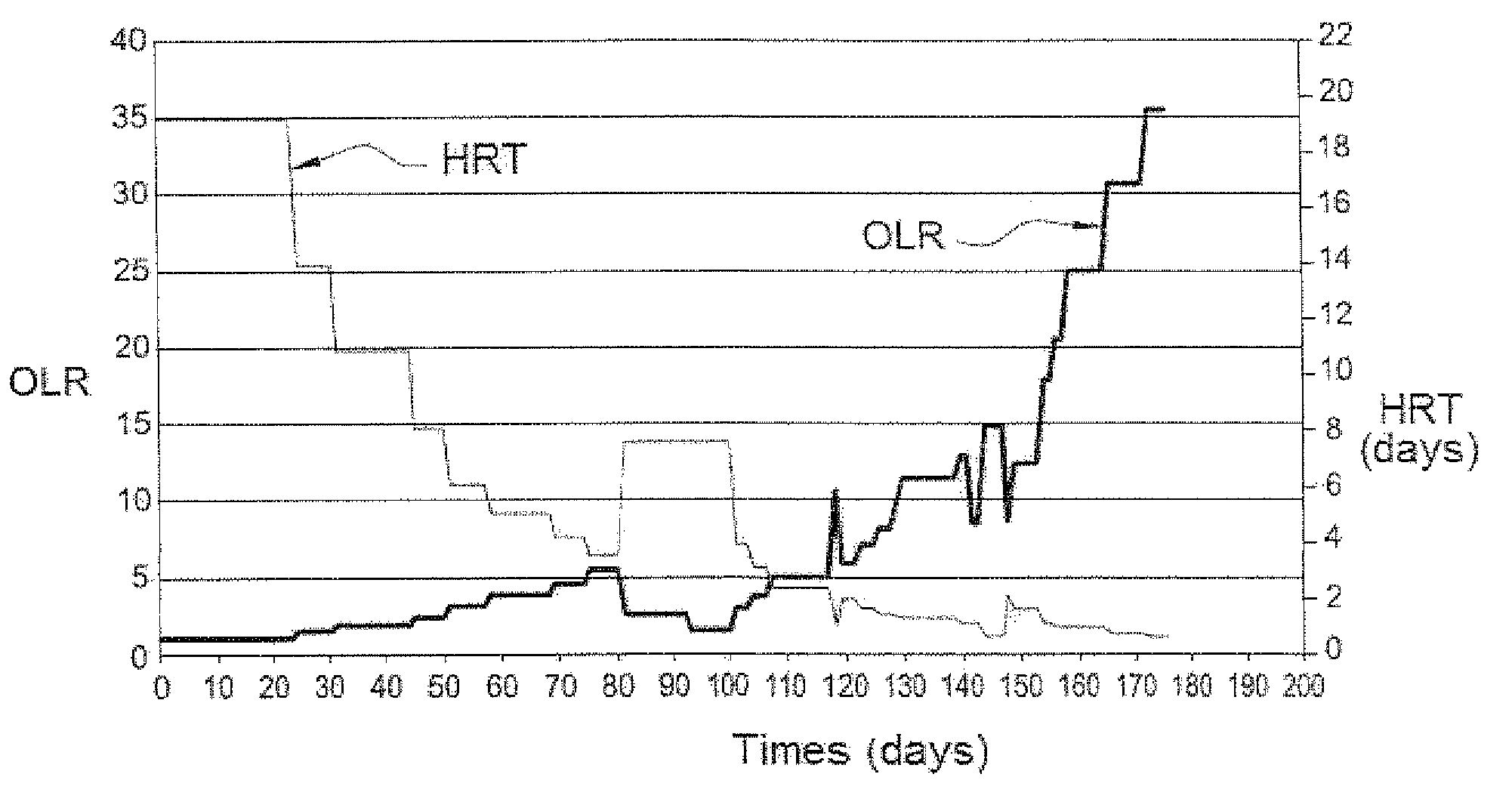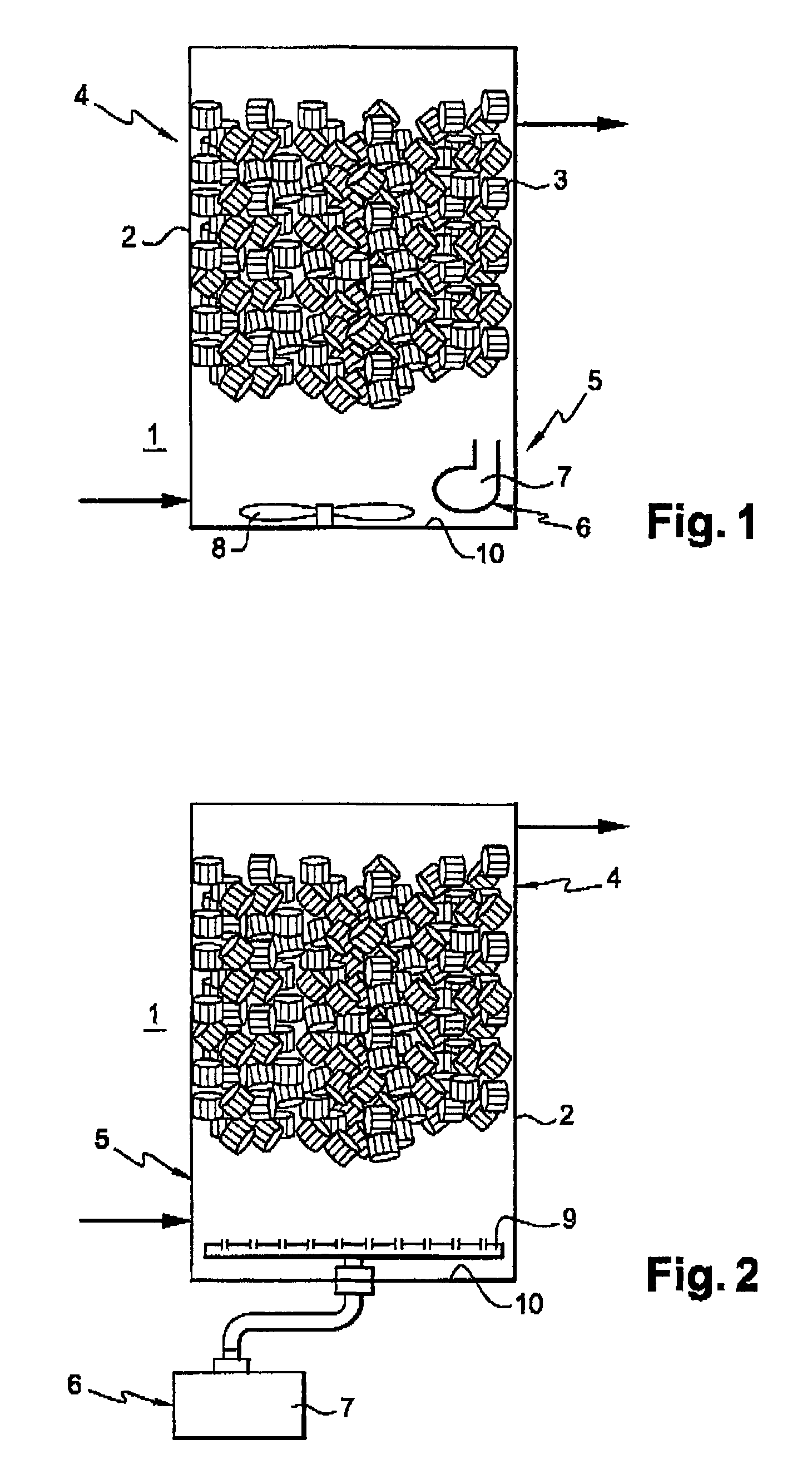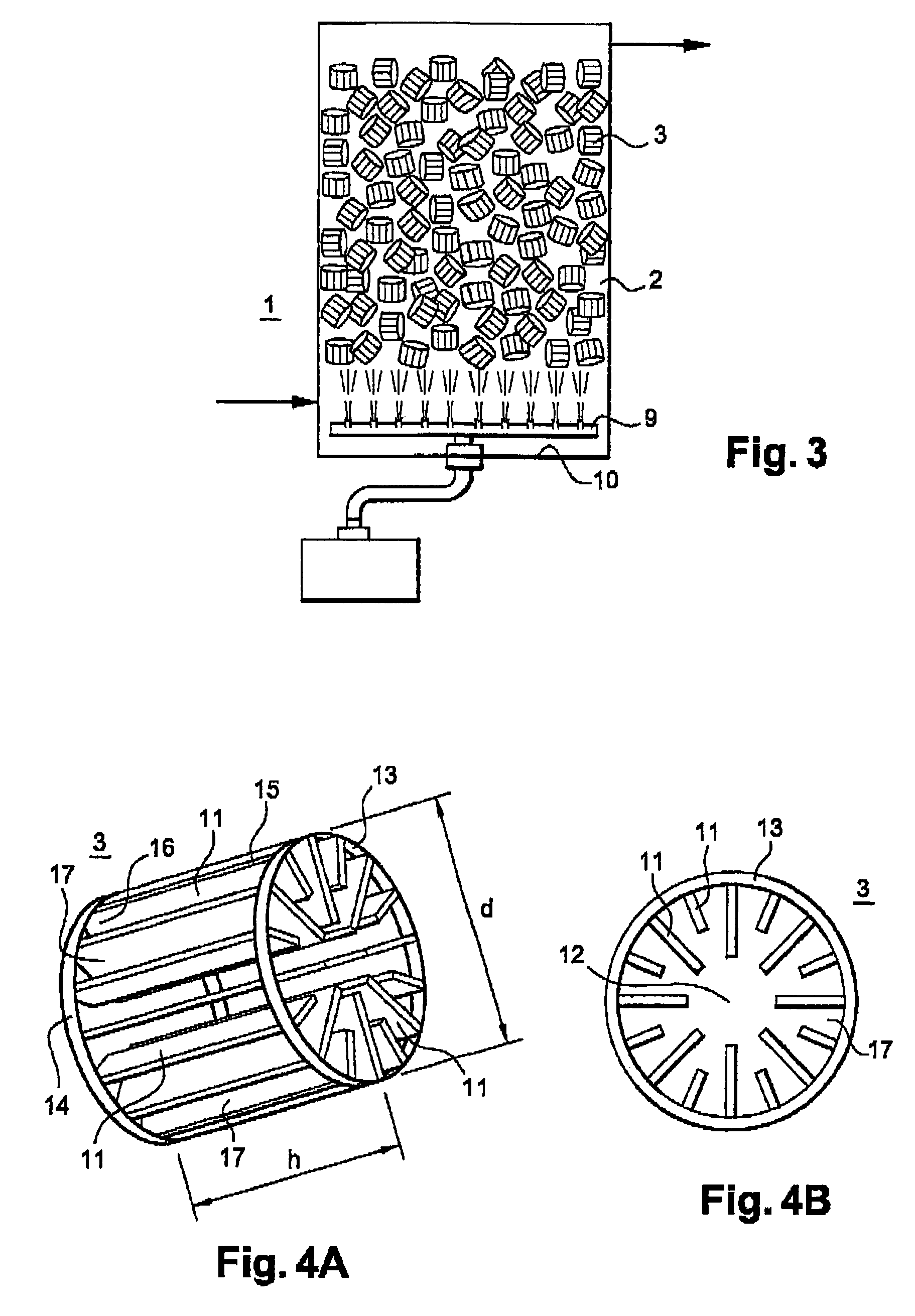Method for purifying effluent in an anaerobic reactor
an anaerobic reactor and effluent technology, applied in the direction of waste based fuel, biological water/sewage treatment, chemistry apparatus and processes, etc., can solve the problems of high energy consumption, high cost, and high risk of clogging of the reactor, so as to eliminate a large portion of the pollution that they contain, the effect of excellent performance levels and low cos
- Summary
- Abstract
- Description
- Claims
- Application Information
AI Technical Summary
Benefits of technology
Problems solved by technology
Method used
Image
Examples
Embodiment Construction
[0072]FIG. 1 shows a biological reactor 1 that can operate anaerobically. The reactor 1 comprises a tank 2 in which a number of solid supports 3 are used in bulk. In the case that is shown, the supports 3 have a density that is considerably less than the density of the water such that all the supports are concentrated in an upper portion 4 of the tank 2 of the reactor 1. The density of the supports is encompassed, for example, between 0.90 and 1.2.
[0073]A support example 3 that can be used in the reactor 1 is shown in FIGS. 4A and 4B. The support 3 is generally circular-cylindrical in shape with a height h of about 3 cm and a diameter d of between 2.5 and 3.5 cm. Height h is defined as the dimension of the support 3 in the direction that is parallel to the longitudinal axis of the support. The support 3 is equipped with a number of rigid flanges 11 that are directed toward the center 12 of the support 3. The flanges 11 are all attached by a first end 15 to a first rigid ring 13 and ...
PUM
| Property | Measurement | Unit |
|---|---|---|
| concentration | aaaaa | aaaaa |
| diameter | aaaaa | aaaaa |
| hydraulic dwell time | aaaaa | aaaaa |
Abstract
Description
Claims
Application Information
 Login to View More
Login to View More - R&D
- Intellectual Property
- Life Sciences
- Materials
- Tech Scout
- Unparalleled Data Quality
- Higher Quality Content
- 60% Fewer Hallucinations
Browse by: Latest US Patents, China's latest patents, Technical Efficacy Thesaurus, Application Domain, Technology Topic, Popular Technical Reports.
© 2025 PatSnap. All rights reserved.Legal|Privacy policy|Modern Slavery Act Transparency Statement|Sitemap|About US| Contact US: help@patsnap.com



